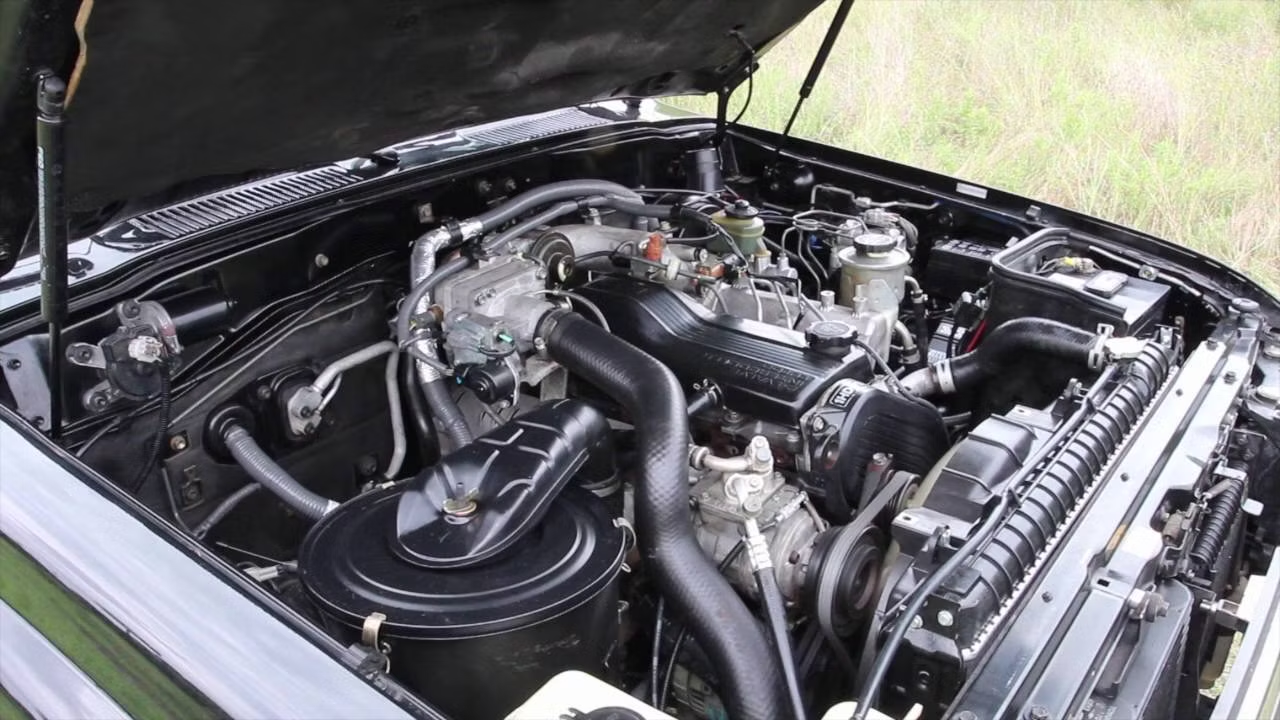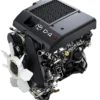Common Issues with the 1HD-FTV Engine and How to Address Them
Common Issues with the 1HD-FTV Engine and How to Address Them
The Toyota 1HD-FTV engine is a powerhouse that has earned its place among diesel enthusiasts for its performance, reliability, and robustness. Used primarily in the Toyota Land Cruiser and other heavy-duty vehicles, this engine is known for its durability under tough conditions. However, like any mechanical system, it is not immune to issues. In this article, we’ll explore some common problems associated with the 1HD-FTV engine and provide practical solutions to address them. Common Issues with the 1HD-FTV Engine and How to Address Them
Overview of the 1HD-FTV Engine
Before diving into the common issues, it’s helpful to have a brief overview of the 1HD-FTV engine. This 4.2-liter inline-six turbocharged diesel engine is designed for heavy-duty applications. With a power output of approximately 202 horsepower and torque of around 430 Nm (317 lb-ft), it’s built to deliver exceptional performance in both on-road and off-road scenarios. Common Issues with the 1HD-FTV Engine and How to Address Them
Despite its many strengths, owners have reported certain issues that can arise over time. Understanding these problems can help you take proactive measures to ensure your engine continues to perform optimally. Common Issues with the 1HD-FTV Engine and How to Address Them
Common Issues
1. Turbocharger Wear
Description
The turbocharger is a critical component of the 1HD-FTV engine, responsible for boosting power and enhancing performance. However, over time, turbochargers can experience wear and tear, especially if the engine is frequently pushed to its limits or subjected to poor maintenance practices. Common Issues with the 1HD-FTV Engine and How to Address Them
Symptoms
Signs of turbocharger wear can include:
- Increased engine noise
- Reduced power output
- Black smoke from the exhaust
- Oil leaks around the turbo area
Solutions
- Regular Inspections: Schedule routine inspections of the turbocharger, especially if you frequently drive in demanding conditions. Early detection of wear can prevent more severe issues.
- Oil Quality: Use high-quality engine oil that meets Toyota’s specifications. Regularly change the oil and replace the oil filter to ensure proper lubrication of the turbocharger.
- Cool Down Periods: Allow the engine to idle for a minute or two before shutting it off after high-load driving. This helps cool the turbo and reduces thermal stress. Common Issues with the 1HD-FTV Engine and How to Address Them
2. Injector Problems
Description
Fuel injectors are essential for delivering the right amount of diesel into the combustion chamber. Over time, they can become clogged or fail, leading to poor engine performance and increased fuel consumption.
Symptoms
Common symptoms of injector issues include:
- Rough idling
- Poor fuel economy
- Engine misfires
- Increased exhaust smoke
Solutions
- Regular Cleaning: Use fuel additives designed to clean injectors periodically. This can help maintain optimal performance and prevent clogging.
- Inspect Fuel Quality: Always use high-quality diesel fuel. Contaminated or low-quality fuel can lead to injector problems.
- Replace Faulty Injectors: If cleaning does not resolve the issue, consider replacing the faulty injectors. It’s advisable to consult a qualified mechanic for proper diagnosis and replacement. Common Issues with the 1HD-FTV Engine and How to Address Them
3. Cooling System Failures
Description
The cooling system is crucial for maintaining the engine’s optimal operating temperature. Overheating can cause significant damage to the engine, including head gasket failure and warping of engine components.
Symptoms
Signs of cooling system issues include:
- Overheating engine
- Coolant leaks
- Steam from the engine bay
- Fluctuating temperature gauge
Solutions
- Regular Coolant Changes: Follow the manufacturer’s recommended schedule for coolant changes. Using the right type of coolant is essential for protecting the engine and preventing corrosion.
- Check for Leaks: Periodically inspect the cooling system for leaks, particularly around hoses, the radiator, and the water pump. Address any leaks promptly to avoid coolant loss.
- Thermostat Inspection: A faulty thermostat can lead to overheating. If you notice abnormal temperature readings, have the thermostat checked and replaced if necessary. Common Issues with the 1HD-FTV Engine and How to Address Them
4. Oil Leaks
Description
Oil leaks can occur in various parts of the 1HD-FTV engine due to worn gaskets, seals, or components. While a small leak might seem insignificant, it can lead to more serious problems if left unaddressed.
Symptoms
Signs of oil leaks include:
- Puddles of oil under the vehicle
- Low oil levels
- Burning oil smell
- Engine noise due to low lubrication
Solutions
- Regular Checks: Frequently check the engine oil level and inspect for signs of leaks. Address any drops in oil levels promptly.
- Replace Worn Seals: If you identify a leak, inspect the gaskets and seals. Replacing worn or damaged seals can often resolve the issue.
- Professional Inspection: If the source of the leak is not easily identifiable, consult a qualified mechanic for a thorough inspection. Common Issues with the 1HD-FTV Engine and How to Address Them
5. Electrical Issues
Description
Electrical problems can manifest in various ways, from dashboard warning lights to complete engine failure. Given the complexity of modern vehicles, electrical issues can sometimes be challenging to diagnose. Common Issues with the 1HD-FTV Engine and How to Address Them
Symptoms
Common symptoms include:
- Dashboard warning lights (e.g., check engine light)
- Difficulty starting the engine
- Erratic behavior of electrical components
Solutions
- Diagnostic Scans: Use an OBD-II scanner to read any error codes. This can help identify specific electrical issues that may need addressing.
- Inspect Wiring and Connections: Regularly check the wiring harnesses and connections for wear, corrosion, or damage. Ensuring good electrical connections is vital for engine performance.
- Battery Maintenance: Regularly check the battery’s condition and terminals. A weak or faulty battery can lead to numerous electrical issues. Common Issues with the 1HD-FTV Engine and How to Address Them
6. Exhaust System Blockages
Description
The exhaust system is essential for directing harmful gases away from the engine. Blockages can occur due to soot buildup or damaged components, which can negatively affect performance and efficiency.
Symptoms
Signs of exhaust system blockages include:
- Decreased power and acceleration
- Increased fuel consumption
- Unusual noises from the exhaust
Solutions
- Regular Inspections: Periodically inspect the exhaust system for signs of damage or blockages. This includes checking for rust or corrosion.
- Use High-Quality Fuel: Using high-quality diesel fuel can help reduce soot buildup in the exhaust system.
- Professional Cleaning: If you suspect a blockage, consult a mechanic for a thorough cleaning or replacement of the affected components. Common Issues with the 1HD-FTV Engine and How to Address Them
7. Timing Belt Wear
Description
The timing belt plays a crucial role in synchronizing the engine’s internal components. Over time, it can wear out, leading to potential catastrophic engine damage if it fails.
Symptoms
Common symptoms of timing belt wear include:
- Ticking or rattling noises from the engine
- Engine misfires
- Difficulty starting the engine
Solutions
- Follow Maintenance Schedule: Adhere to the manufacturer’s recommended timing belt replacement schedule, typically every 100,000 kilometers (about 62,000 miles).
- Regular Inspections: During routine maintenance, have the timing belt inspected for signs of wear, cracks, or fraying.
- Professional Replacement: If you suspect the timing belt is worn, have it replaced by a qualified mechanic to prevent potential engine damage. Common Issues with the 1HD-FTV Engine and How to Address Them
Conclusion
The Toyota 1HD-FTV engine is a robust and reliable powerplant that can serve you well for many years, provided you stay ahead of potential issues. Understanding the common problems associated with this engine allows you to take proactive steps to maintain its performance and longevity. Regular inspections, adherence to maintenance schedules, and using high-quality parts and fluids can go a long way in ensuring your engine remains in top condition. Common Issues with the 1HD-FTV Engine and How to Address Them
By addressing these common issues promptly and effectively, you can enjoy the benefits of the 1HD-FTV engine, whether you’re navigating off-road adventures or towing heavy loads. Remember, proper care and attention can significantly extend the life of your engine and enhance your driving experience.
Installation Guide for the Yanmar 8LV370 Inboard Diesel Engine
Customer Reviews and Experiences with the Yanmar 8LV370 Inboard Diesel Engine
Best Applications for the Yanmar 8LV370 Inboard Diesel Engine
Ultimate Guide to Upgrading the Chevy LS3 6.2L V8 to 700+ HP
Unveiling the Power and Precision of Subaru Engines: A Comprehensive Guide








